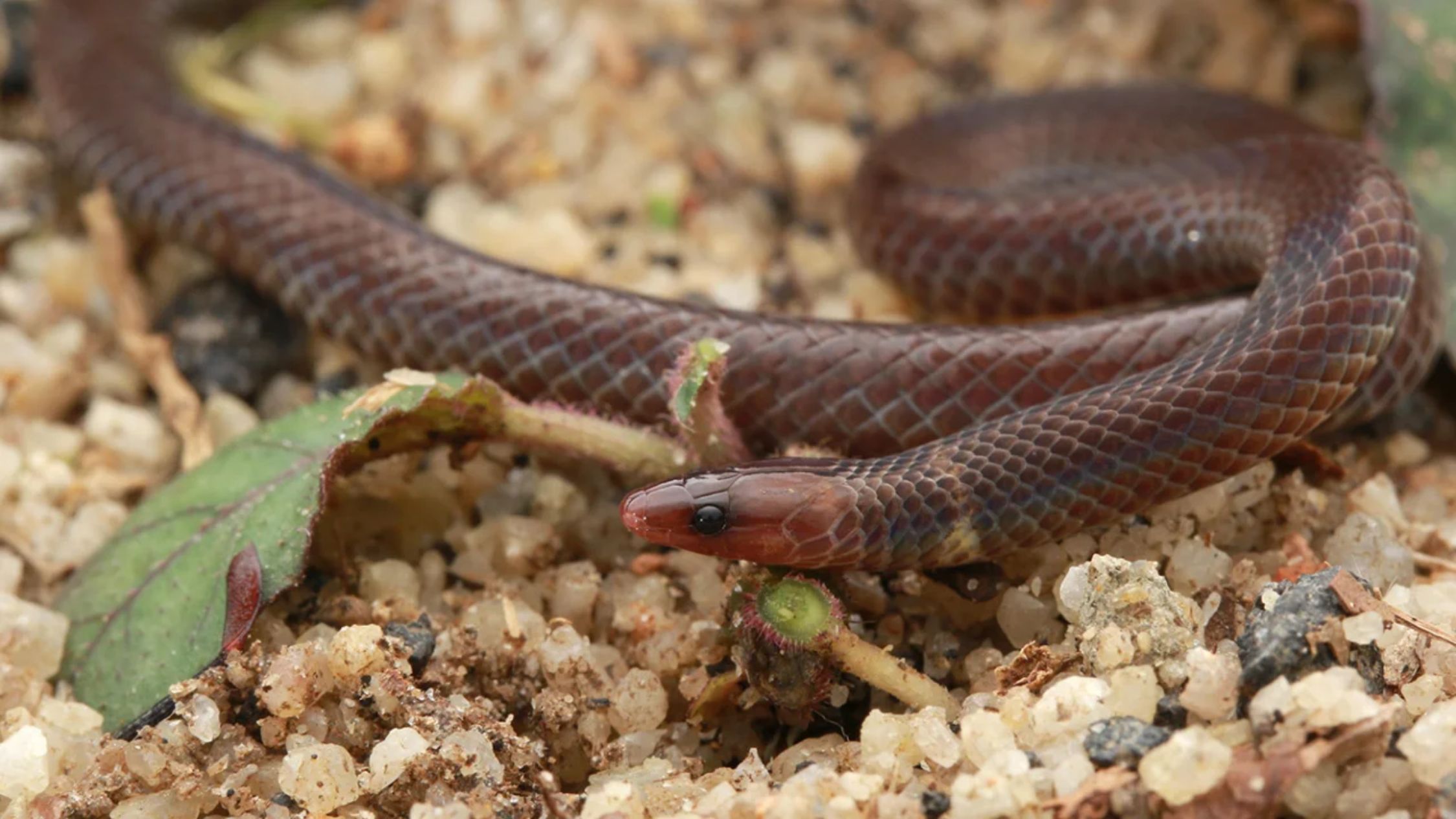(CNN) — We thought snakes did it all, from flying through the air to lasing your body to climbing slippery surfaces. Now, researchers have discovered a species capable of cartwheeling.
Found in parts of Southeast Asia such as southern Thailand, Peninsular Malaysia, Singapore, Sumatra, Borneo and the Philippines, the dwarf cane snake –Pseudorabdion longiceps– Small and nocturnal, it hides during the day in leaf litter or under rocks or logs, researchers say. However, its small size makes it vulnerable to birds and other snakes, such as the striped coral snake.
The images show the sequence of milling motion Pseudorabdion longiceps. (Courtesy: Evan SH Quah)
Small snakes often have an impressive arsenal to defend themselves against predators: camouflage, coloration, scent, playing dead, intimidation, or… running away.
There have been anecdotal reports that the dwarf cane snake could escape, but researchers have documented the unusual defense mechanism for the first time, in a paper published in the journal Wednesday. Biomechanics.
While conducting herpetological surveys in search of other species, the researchers found a one-year-old dwarf cane snake that, startled, “started to throw the coils of its body in a spiral and try to escape”, managing to move around 1.5 meter on the road in less than five seconds.
“Because the cartwheel appears to be very metabolically demanding, snakes cannot sustain it for very long, usually only a few seconds,” corresponding author Ivan Seng Huat Kwa of the University of Malaysia told CNN in an email. Sabah.
By pushing down an incline, the snake was able to gain speed and cover more ground quickly. “The snake was captured and placed on a flat area next to the road, where it repeated the jumping motion several times,” the researchers write. Article..
Cua, who had seen this “amazing” behavior in a dwarf cane snake before, was glad his team had the recording equipment on hand.
They observed the snake “performing active tics by repeatedly throwing its body coils into the air and rolling downwards,” according to a news release. This behavior has not been systematically observed in any other species of snake or reptile, the team adds, although swinging has been recorded as an escape method in some invertebrates, such as moth caterpillars and desert spiders.
But don’t worry: Dwarf reed snakes won’t pounce on you for no reason if you do encounter them.
Snakes use this curious movement pattern when they feel threatened and want to avoid capture. Researchers also speculate that they may do so to startle and confuse predators, including other snakes.
The small, nocturnal pygmy reed snake was videotaped by the researchers “repeatedly throwing its body coils into the air and rolling down the slopes.” (Credit: Eng Wah Teo/Alamy Stock Photo)
“Not only does this sudden movement startle and confuse visually oriented predators, but the rattle leaves a disconnected scent trail that misleads predators and gives the snake more time to escape,” Kua told CNN.
According to Kua, his team believes this behavior extends beyond the dwarf cane snake to other species, “especially cane snakes in the family.” Calamari“. There are reports of cases of other species performing this behavior, including another member of the same species. Pseudorabdion alphonusalisAlso known as white-necked cane snake.


:quality(85)/cloudfront-us-east-1.images.arcpublishing.com/infobae/BH6NLAQGXJGADFWTENBUV7Z7RQ.jpg)
:quality(85)/cloudfront-us-east-1.images.arcpublishing.com/infobae/3GK63ATFOMFAYNUAQKUL4WUJFM.jpg)

:quality(85)/cloudfront-us-east-1.images.arcpublishing.com/infobae/SJ35ZLSJ5NB4BWVRJPSK74P7AQ.jpg)